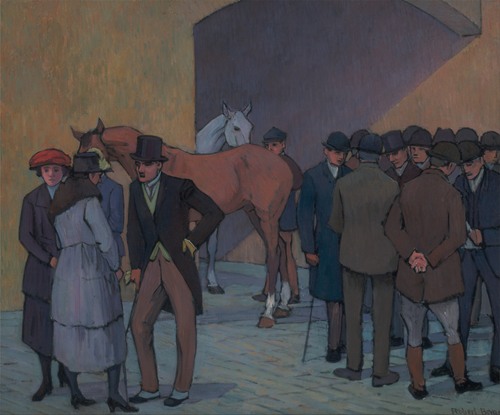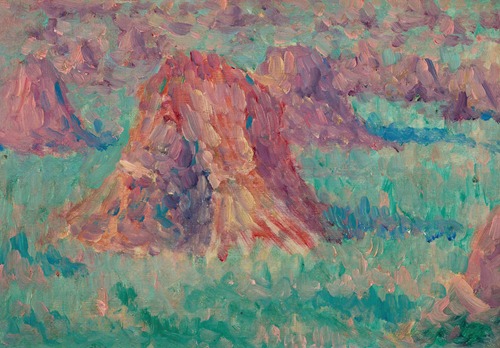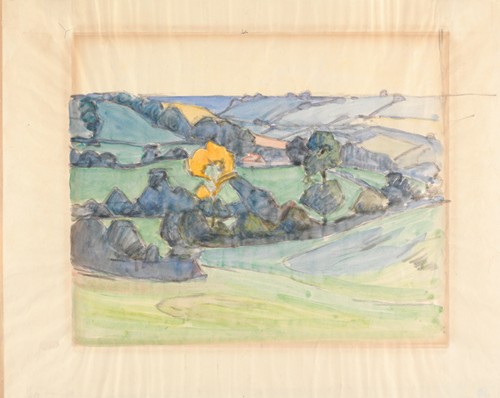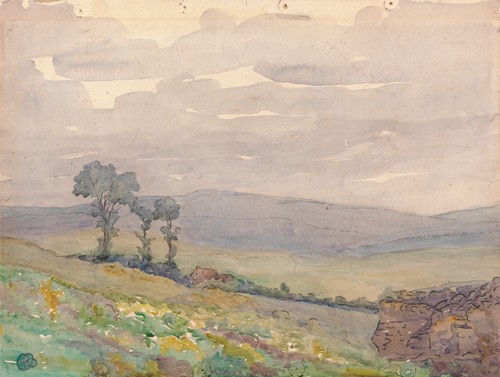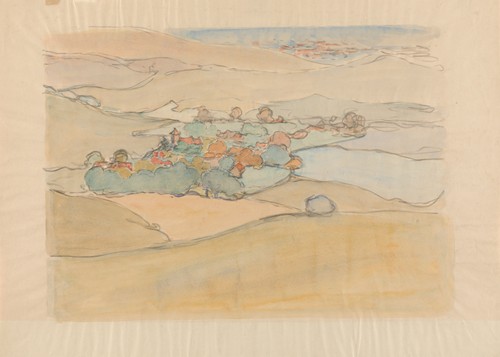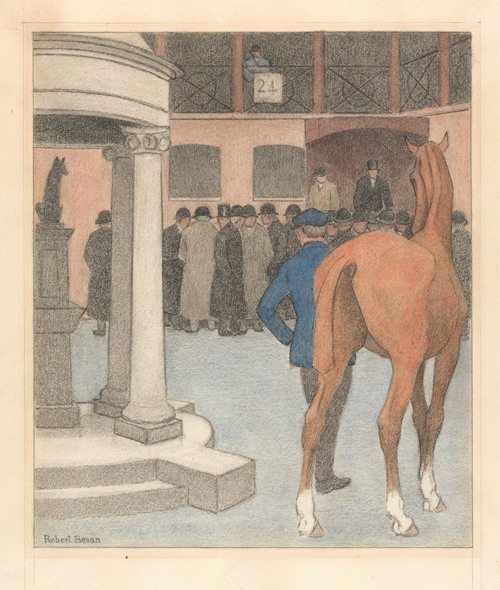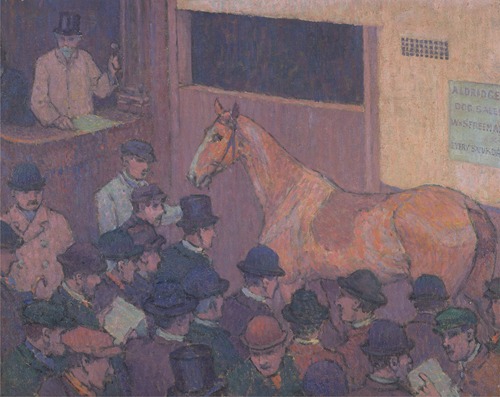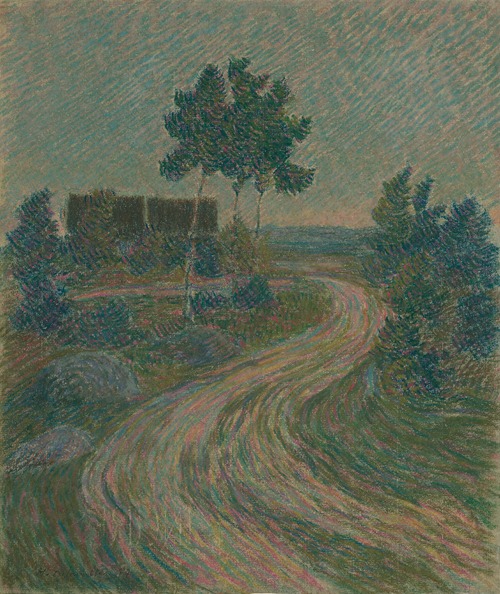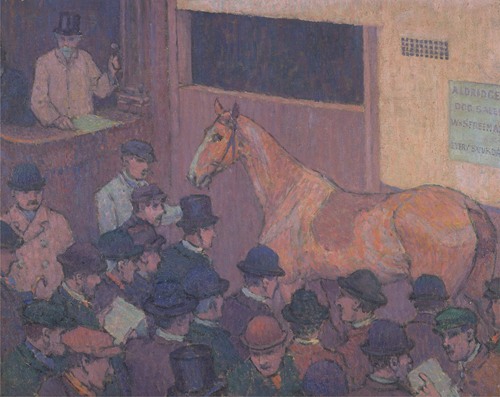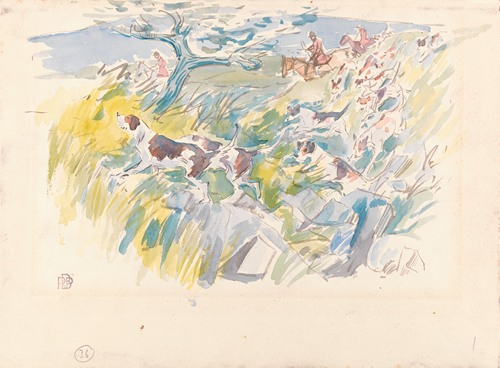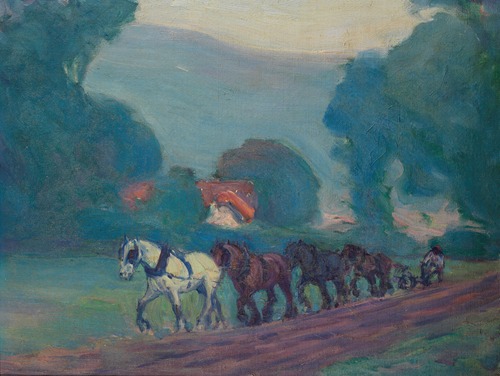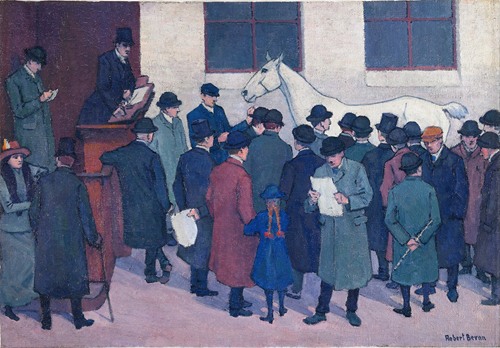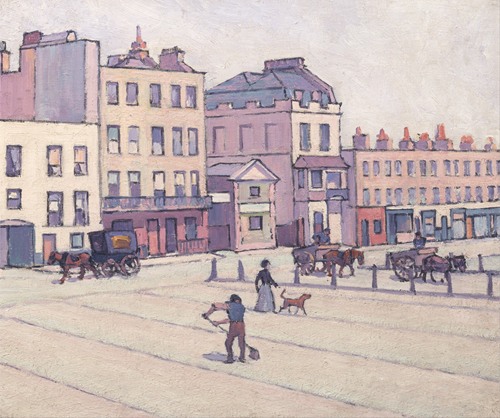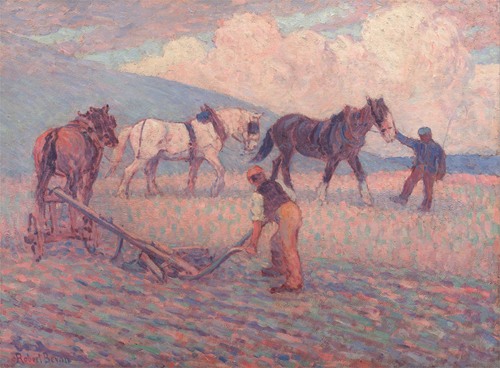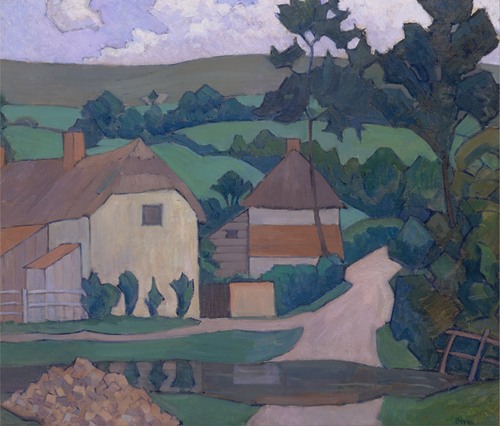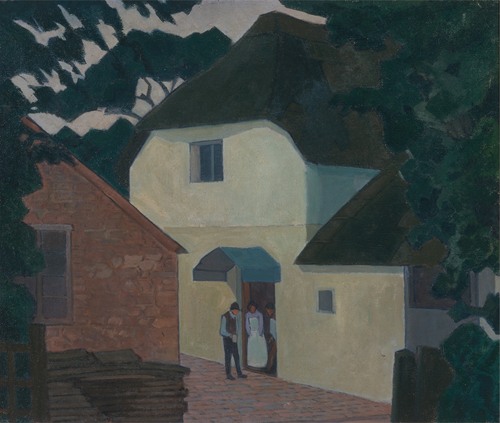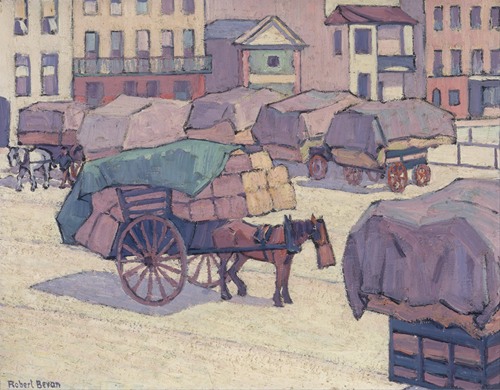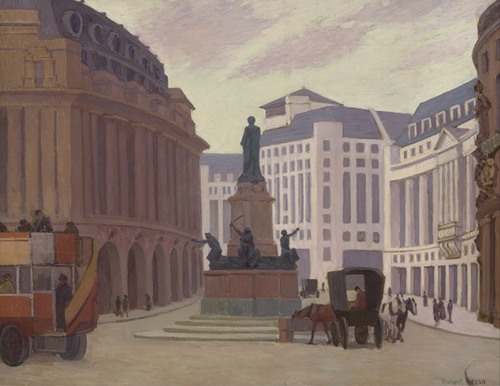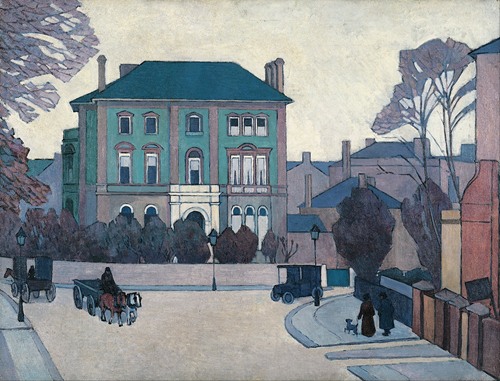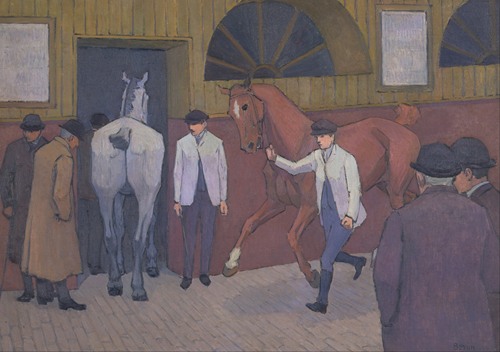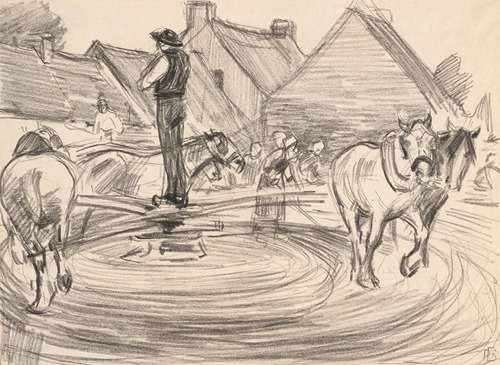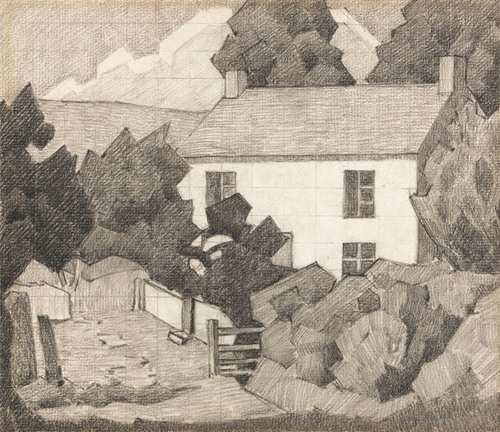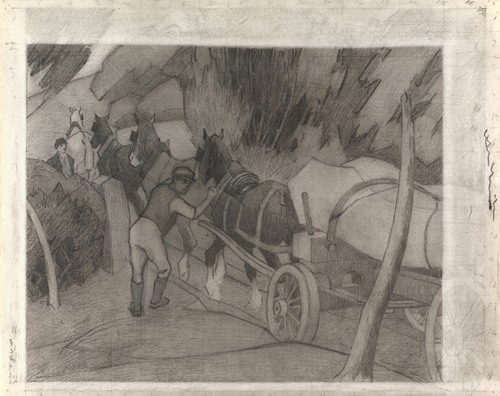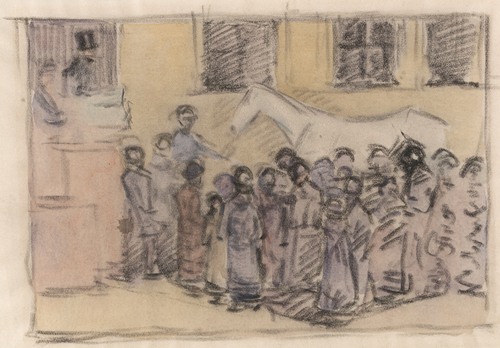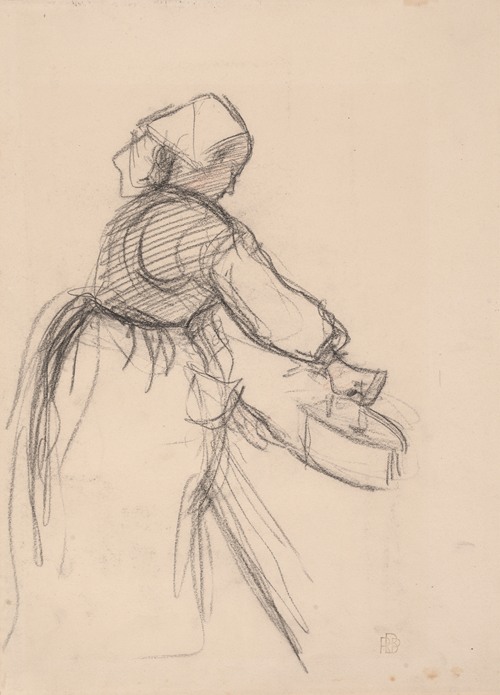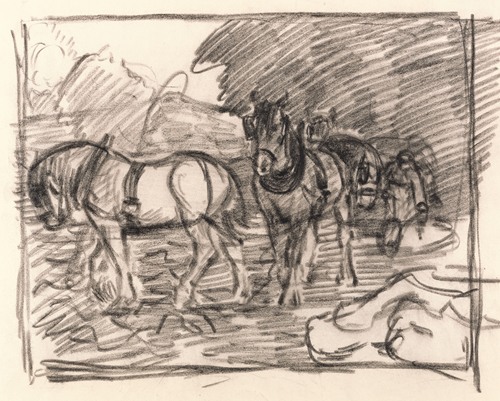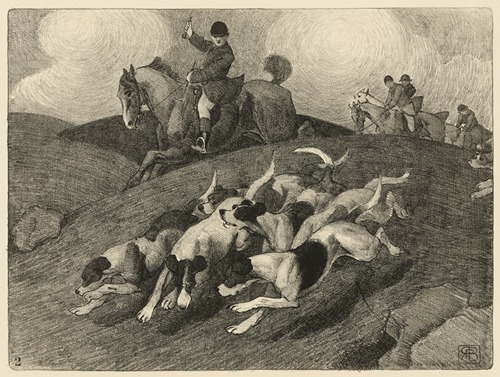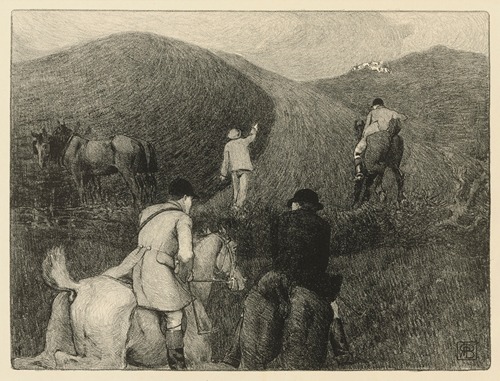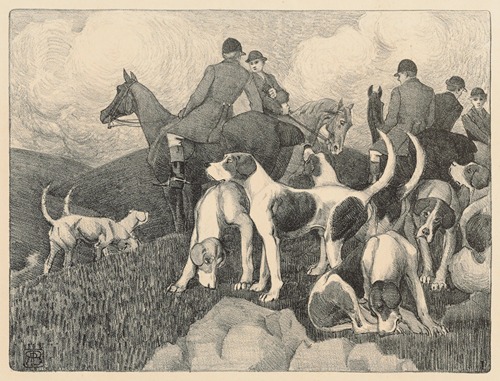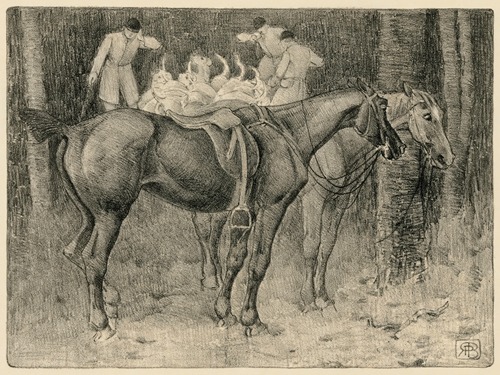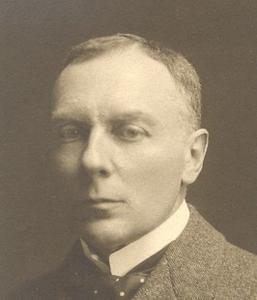

Robert Polhill Bevan
Robert Polhill Bevan was a British painter, draughtsman and lithographer. He was a founding member of the Camden Town Group, the London Group, and the Cumberland Market Group.
He was born in Brunswick Square, Hove, near Brighton, the fourth of six children of Richard Alexander Bevan (1834–1918), a banker, and Laura Maria Polhill. The Bevans had been a Quaker family with long associations with Barclays Bank. They were descended from Silvanus Bevan the Plough Court apothecary and Robert Barclay the Quaker Apologist. The family, who could trace direct descent from Iestyn ap Gwrgant, had left Wales in the 17th century and settled in London.
His first teacher of drawing was Arthur Ernest Pearce, who later became head designer to Royal Doulton potteries. In 1888 he studied art under Fred Brown at the Westminster School of Art before moving to the Académie Julian in Paris. Amongst his fellow students were Paul Sérusier, Pierre Bonnard, Édouard Vuillard and Maurice Denis. Bevan made his first visit to Brittany with a fellow student Eric Forbes-Robertson in 1890 and stayed at the Villa Julia, in Pont-Aven. He made a second visit in the autumn of the following year before travelling to Morocco by way of Madrid to study Velasquez and Goya at first hand. He appears to have done more fox-hunting in Tangier than drawing in the company of the artists Joseph Crawhall and George Denholm Armour and was Master of the Tangier Hunt in his second season.
Bevan returned to Brittany in 1893. There is no evidence that he had ever met Van Gogh but it is obvious in the swirling trees and landscape of his Breton drawings that he knew his work. It is known that he was friendly with Paul Gauguin, who gave him several prints. Bevan also received encouragement from Renoir, particularly in his drawing of horses. Although not evident in the few paintings that survive from this period it is in his drawings, early prints, and two surviving wax panels that the obvious influence of Pont-Aven synthetism can be seen.
On his return to England in 1894 Bevan went to live on Exmoor where he was able to combine painting with hunting.
In the summer of 1897 Bevan met the Polish painter Stanisława de Karłowska at the wedding of Polish art student Janina Flamm with Eric Forbes-Robertson in Jersey. At the end of the year Bevan and de Karłowska married in Warsaw. Her father had extensive land in central Poland and for the remainder of their married life they would make long summer visits there.
Bevan spent most of his summers painting. Until the First World War this was usually at family homes in Poland or Sussex. However, at about this time, he was first invited down to the Blackdown Hills on the Devon-Somerset border as a guest of landowner and amateur artist Harold Harrison. Until the end of his life Bevan continued to paint in the Bolham valley and nearby Luppitt his angular style sitting well with the strong patterning of the landscape.
His London street scenes, which were largely in the area of St John's Wood and Belsize Park, were generally more favourably reviewed than his landscapes.
After a break of nearly twenty years Bevan returned to lithography. Whilst his earlier prints recall landscapes by Van Gogh the later works are more in the nature of tone translations of oil paintings. "In either instance they are technically superb and notable additions to English lithography of the period."
In 1922 he was elected to the New English Art Club.
Bevan died on 8 July 1925, following an operation for stomach cancer.
